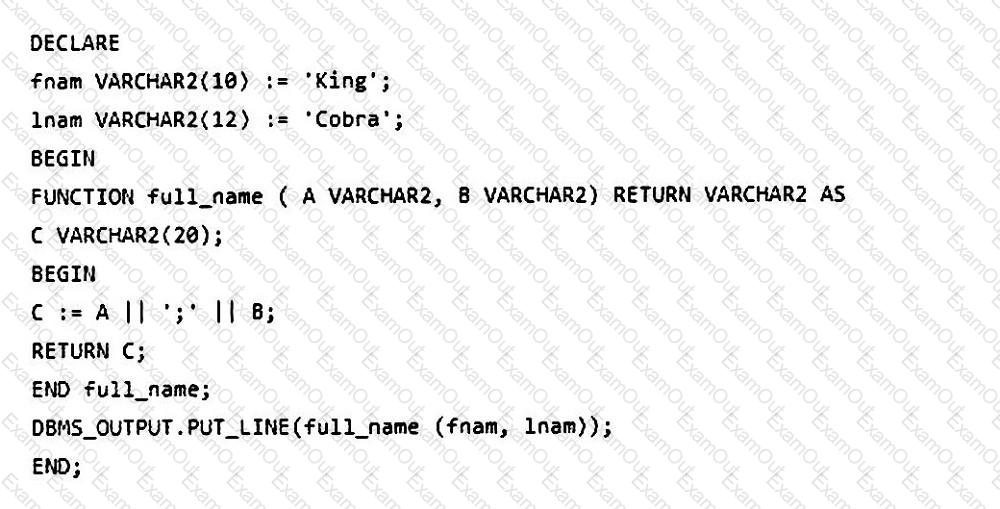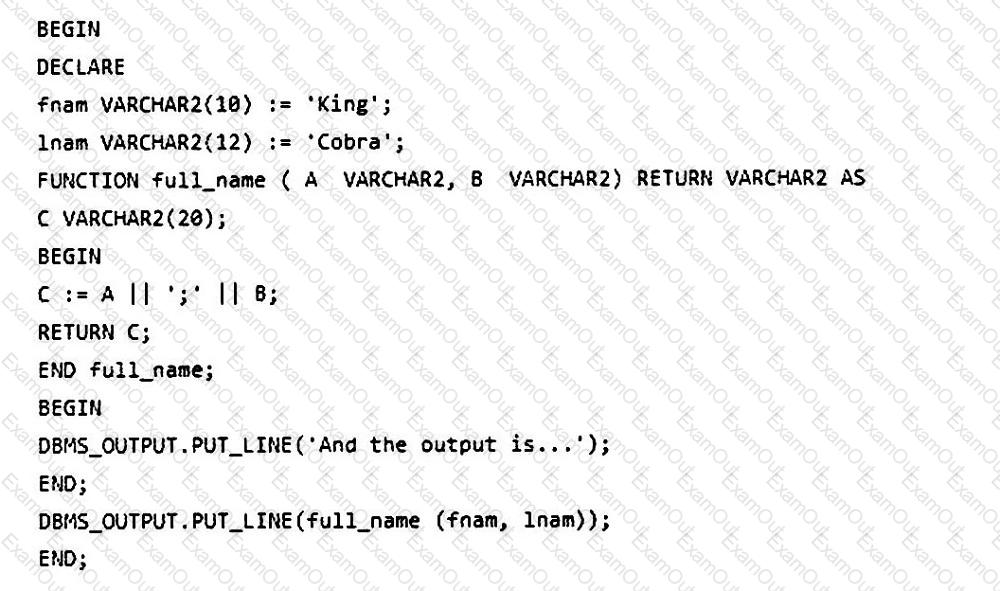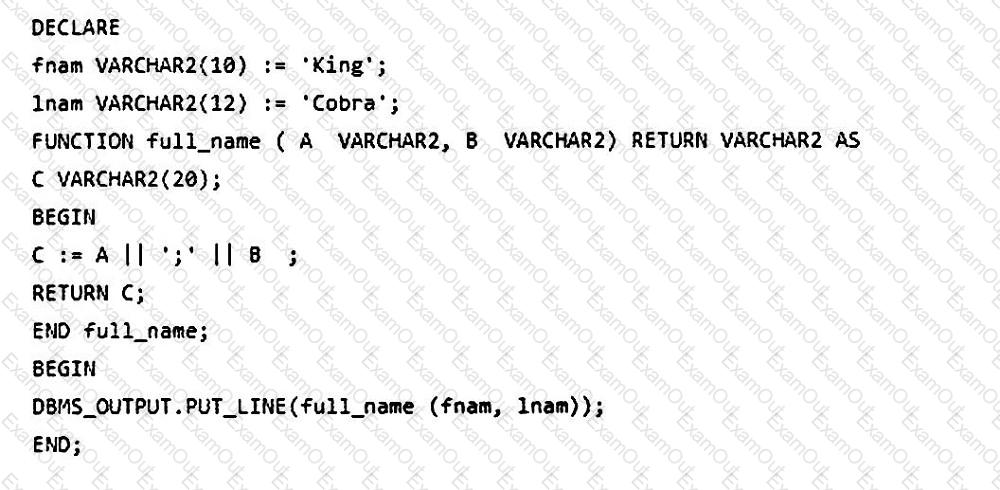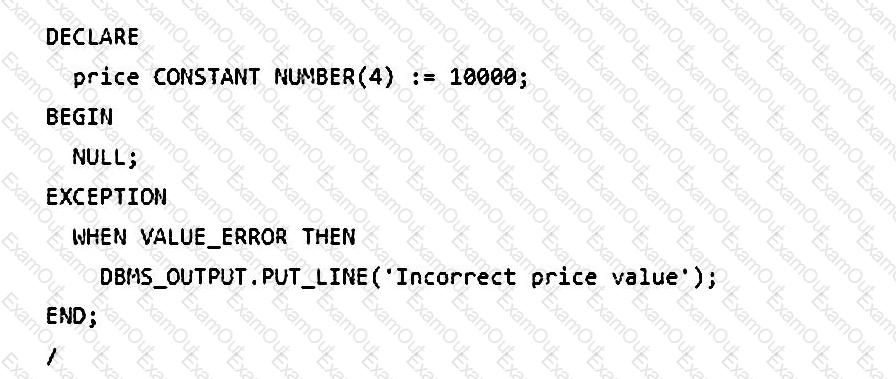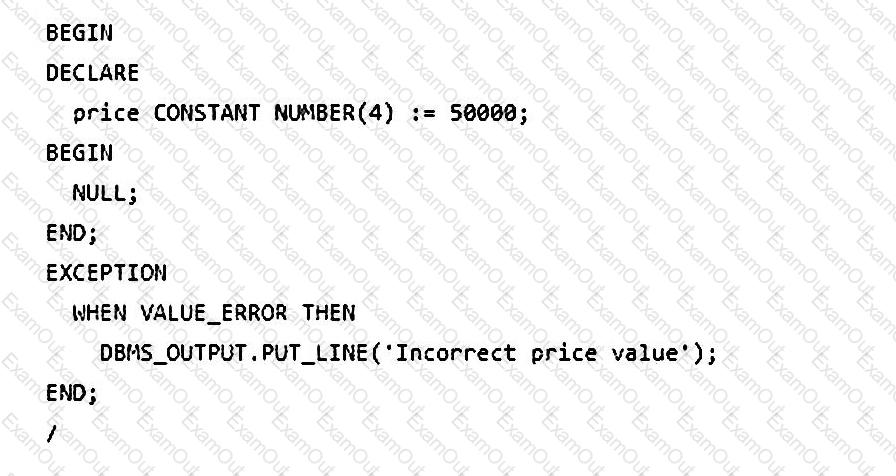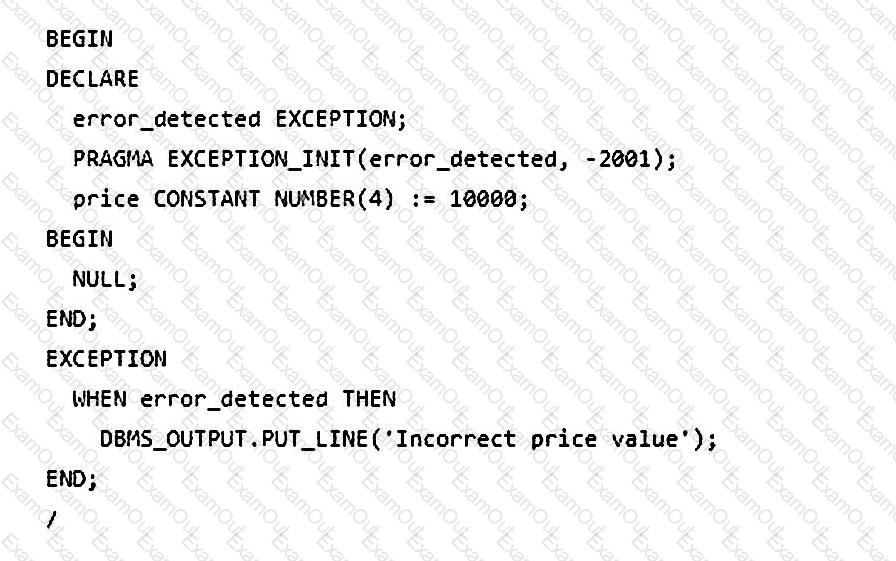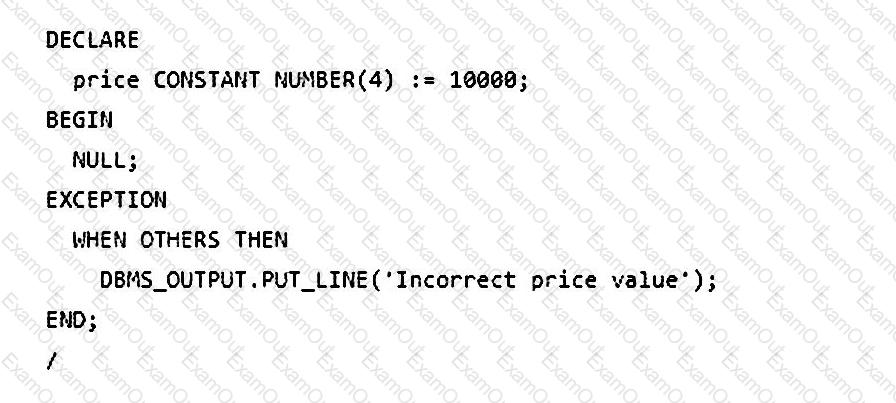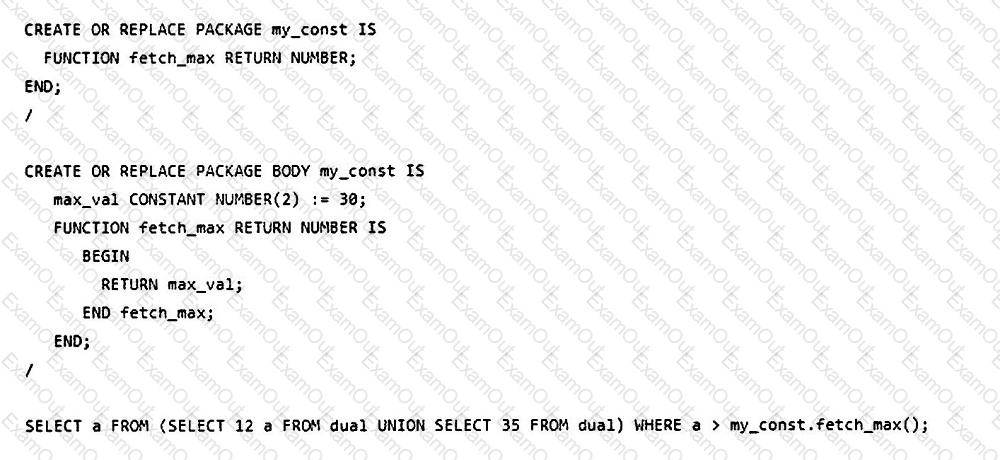Which three are true about user-defined functions? (Choose three.)
Which is the correct method to implement a local subprogram in an anonymous block?
Which three are valid PL/SQL variable names? (Choose three.)
Which block of code displays the error message “Incorrect price value”?
Which is true about the PLSCOPE_SETTINGS parameter?
Which two are true about collections and RECORD types? (Choose two.)
SERVEROUTPUT is enabled.
Which is the correct method to use a PACKAGED CONSTANT in SELECT statements?
Which is true about counter variables in a FOR loop?
Which two are true about named notations in a PL/SQL subprogram? (Choose two.)

